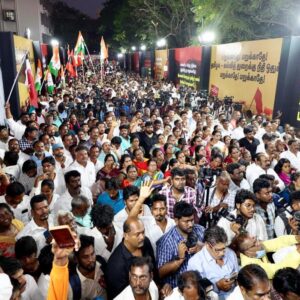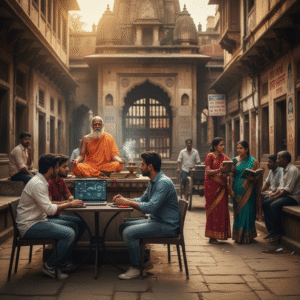Behind the Glamour, a Grassroots Economic Engine
Hyderabad – 2025
Film cities have long been seen as spaces of glamour, creativity, and stardom. But beneath the surface of elaborate sets and star trailers lies a more grounded reality—film cities are economic ecosystems.
FromRamoji Film City in HyderabadtoMumbai’s Film City in Goregaon, these production hubs are increasingly being recognized asengines of regional development, employing thousands and contributing directly to tourism, real estate, and service industries.
As India pushes to become a global content hub,film cities are no longer just cultural monuments—they’re strategic infrastructure.
Ramoji Film City: A Blueprint of Scale
Spread across 2,000 acres,Ramoji Film Cityis the world’s largest integrated film studio complex. Beyond hosting Telugu and Hindi productions, it generates:
- Direct employment for over 6,000 workers
- Tourism footfall exceeding 1.5 million annually
- Revenue streams from hotels, guided tours, and business conferences
- Logistics support for ad films, web series, and reality shows
Its presence hasuplifted surrounding districts in Telangana, creating ancillary industries in catering, transport, hospitality, and craft services.
Film City Mumbai: An Urban Nerve Centre
Tucked within Mumbai’s Aarey Colony,Film City Mumbaiis the heart of Hindi-language production.
Despite infrastructural constraints, it houses:
- Dozens of shooting floors
- Hundreds of sets each year
- Back-to-back daily schedules for soaps, OTT shows, and music videos
It supports a micro-economy of:
- Spot boys, light technicians, makeup artists, and costume suppliers
- Local vendors offering chai, set furniture, and transport
- Short-term rentals for artists and production teams
Estimates suggest Film City generatesover ₹100 crore in indirect annual employment turnover.
New-Age Film Cities Across India
States are now actively buildingcinema infrastructure as economic policy:
- UP Film City (Noida): Designed as a media & entertainment tech hub
- Kolkata’s New Town Film City: Focused on Bengali and multilingual productions
- Chennai and Kochi film zones: Supporting regional cinema, especially in Tamil and Malayalam
These projects are backed by:
- Land subsidies
- Single-window production clearances
- Skill development programs for youth in animation, VFX, sound, and editing
Tourism & Hospitality Boost
Film cities also double ascinematic theme parks—attracting tourists curious about behind-the-scenes glamour.
- Ramoji’s guided tours generate significant revenue during school vacations and wedding seasons
- Mumbai’s Film City recently launched public access tours for domestic and international tourists
- Local businesses—hotels, taxis, food chains—benefit directly from shooting schedules and tourism tie-ins
Challenges & Opportunities
Challenges:
- Environmental concerns in protected zones (e.g., Mumbai’s Aarey forest)
- Urban congestion around studio campuses
- Lack of formal worker protections in freelance-heavy environments
Opportunities:
- Positioning India as a global filming destination
- Incentivizing eco-friendly set construction
- Integrating training institutes within film cities to build future workforce
The Real Impact
Behind every cinematic frame shot in a film city lies:
- A chai stall owner making ₹5,000 a day
- A junior artist earning ₹800 per scene
- A carpenter crafting palace doors for a mythological epic
- A light technician who hasn’t missed a shift in 27 years
This is where cinema stops being spectacle—and becomes sustenance.












